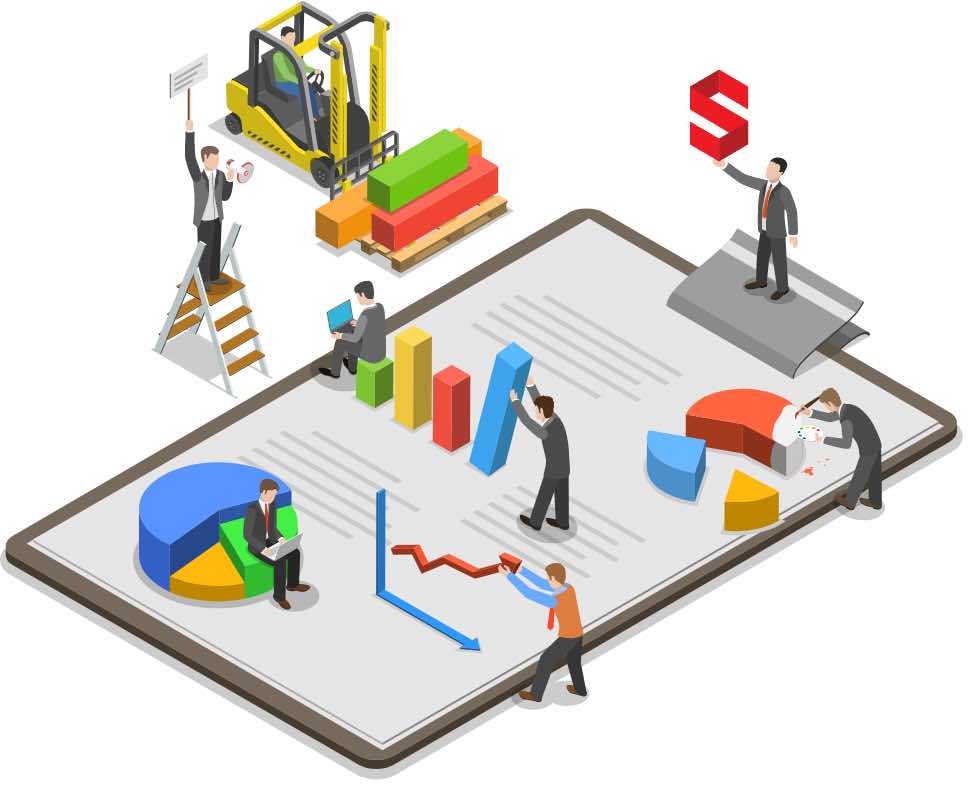
Construction projects are considered highly structured endeavors carried out by many resources. It requires both non-human and human resources to meet project objectives. Therefore, effective management of project resources plays a pivotal role in the construction industry.
The onus is on managers to productively utilize construction resources and mitigate resource-related challenges. This will help to complete the project on time and within budget.
This article highlights the significance of construction resource management and strategies for managing them effectively.
First, let’s look at what makes the construction industry different from others.
1. What Are the Characteristics of the Construction Industry?

Construction projects are always driven by time and cost and involve a large scale of both human and non-human resources. This includes architects, civil and electrical engineers, site workers, sub-contractors, supervisors, heavy equipment, machines, materials, etc.
The timeline and budget of construction projects are typically very long and high, and it takes months or even years to meet the deliverables. The uniqueness of construction projects also includes the external influences and changing requirements that can alter throughout the project timeline. These can consist of technological upgrades, financial restrictions, market volatility, weather constraints, and evolving client requirements.
The changes in the project timeline or client expectations can give rise to many resource constraints and other issues. Therefore, resource managers must always be prepared to foresee the risks and leverage and plan the workforce accordingly.
Now that we know the characteristics of a construction project, let’s look at its significance.
2. Construction Resource Management and Its Importance
Construction resource management entails proactive planning, scheduling, and utilizing resources to meet the project objectives within time. In addition, it ensures that the right number of skilled resources are available for different construction operations.
It prevents organizations from hiring excess resources, eliminating staff shortages, and helps you always keep a tab on your construction workforce. Effective construction resource management also helps in equipment tracking and ensuring the availability of necessary equipment throughout the project.
Since construction resource management enables the allocation of skilled and cost-effective resources, it helps minimize costs, complete projects within budget, and provide quality deliverables. It also ensures that the resources are optimally utilized, thus, not overburdened with work.
Thus, with effective management of resources, the construction firms can foresee and mitigate any issues such as scope changes, project delays, lower productivity, etc., that will impact the resource plan.
Now let’s look at some practical ways to manage resources in the construction sector.
3. 5 Effective Strategies to Manage Resources for Construction Projects

As mentioned earlier, the construction industry requires a huge workforce with diverse expertise; therefore, leveraging Saviom’s advanced resource management tool and implementing effective strategies ensures successful project completion.
Here’s How:
3.1. Forecast and bridge capacity-vs-demand gap in advance
A lack of foresight into pipeline projects can result in last-minute firefighting that causes unnecessary hiring/firing costs, project delays, and budget overruns. Therefore, managers can forecast the future demand in advance and analyze the existing resource capacity. That way, they can ensure that the right number of resources with the requisite skillset is available before a project’s commencement
Robust resource management allows forecasting the future project resource demand in advance. Resource capacity planning enables managers to compare the resource capacity against the demand to identify the excesses and shortfalls. Accordingly, managers can apply appropriate resourcing treatments such as training, adjusting project timelines, hiring, etc., to bridge the gap.
3.2. Enable timely and competent resource allocation across projects
Once resources managers receive the resource request from the project manager, they need to ensure the timely and competent allocation of resources. They need to identify if the required competencies are available in the existing resource pool.
The 360-degree visibility and the advanced filter of the tool enable resource managers to get a unified view of all enterprise resources. This allows managers to narrow down the resources based on their profile and other attributes like their skills, competencies, cost rate, and availability and capacity. Then, managers can assign them to different projects in advance based on this data.
3.3. Ensure productive resource utilization & real-time tracking
Under/overutilization of resources negatively impacts workforce performance and productivity. For example, when a civil engineer has too many tasks to complete beyond their capacity, it leads to burnout due to excessive stress. Similarly, underutilized employees exhibit disengagement as they cannot explore their true potential. Therefore, managers must track their utilization levels and ensure that they are optimally utilized.
The resource management tool helps track the utilization levels of resources in real-time by providing a comprehensive color-coded heatmap and forecast vs. actual reports. Managers can identify underutilized or overutilized resources and adjust their schedules based on these data. Additionally, they can mobilize them from non-billable or less-priority to billable or high-priority work and enhance productivity.

3.4. Create a proactive plan to reduce bench size
The sudden ramp down of resources frequently happens in the construction industry leading to excessive bench size. Since benched resources do not bring any revenue to the organization, which deters their growth and lowers their morale. Thus, efficient bench management is required to keep this impact under control.
The resource management software offers people on the bench and project vacancy report that helps manage the bench size before it hits a threshold limit. Through timely forecasting, managers can predict resources that will end up on the bench and find suitable work for them using the project vacancy reports. This ensures continuous productivity and high performance.
3.5. Monitor and control resource-related risks ahead of the curve
Construction projects can face numerous resource-related issues like sudden injury of site workers, unplanned absenteeism, conflicts between supervisors and workers, employee burnout, etc., leading to project delays or failure. Therefore, managers need to implement measures to monitor and control these resource-related risks.
Most of these risks can be mitigated if the resources are allocated to projects aligned with their skill set and interest and optimally utilized. Therefore, organizations should first identify the resources with the knowledge, skills, and abilities to perform certain functions by using the tool. They should then develop a backup plan to prepare multiple individuals to perform those functions through training/upskilling.
Conclusion
Completing a construction project as per the client’s expectations is an arduous job. The points mentioned above will help managers to look into every aspect of a project and effectively overcome various resource-centric challenges. In addition, it will allow them to formulate the right resource plan well in advance and lead the project to success.








